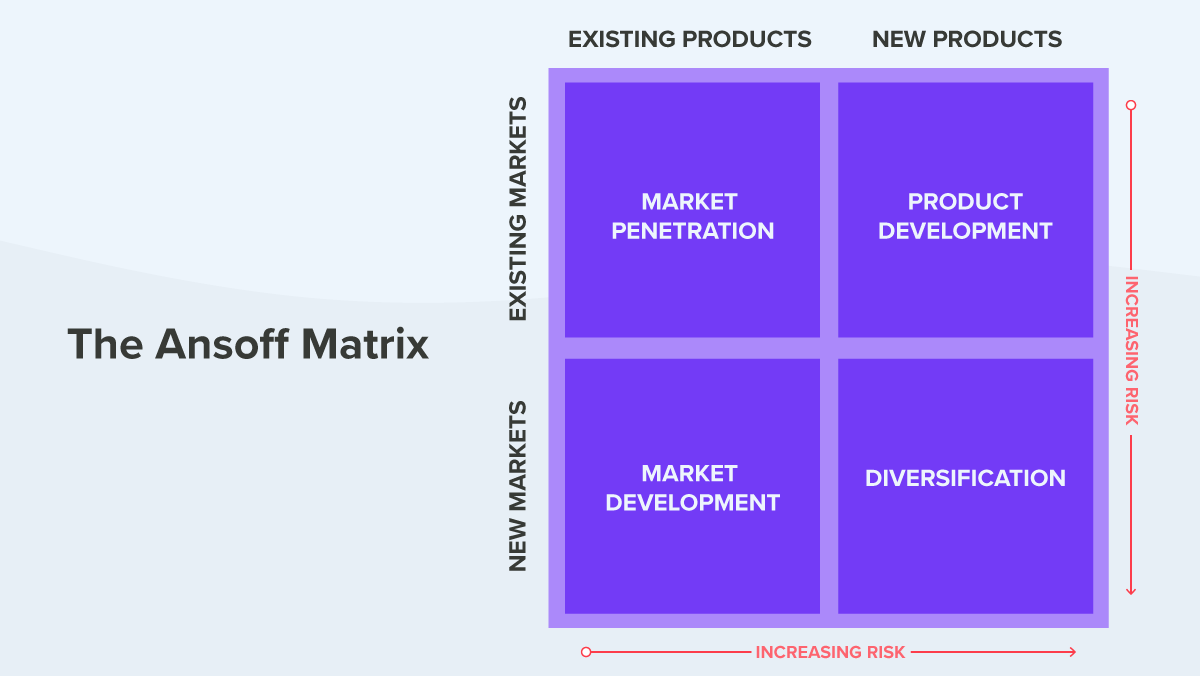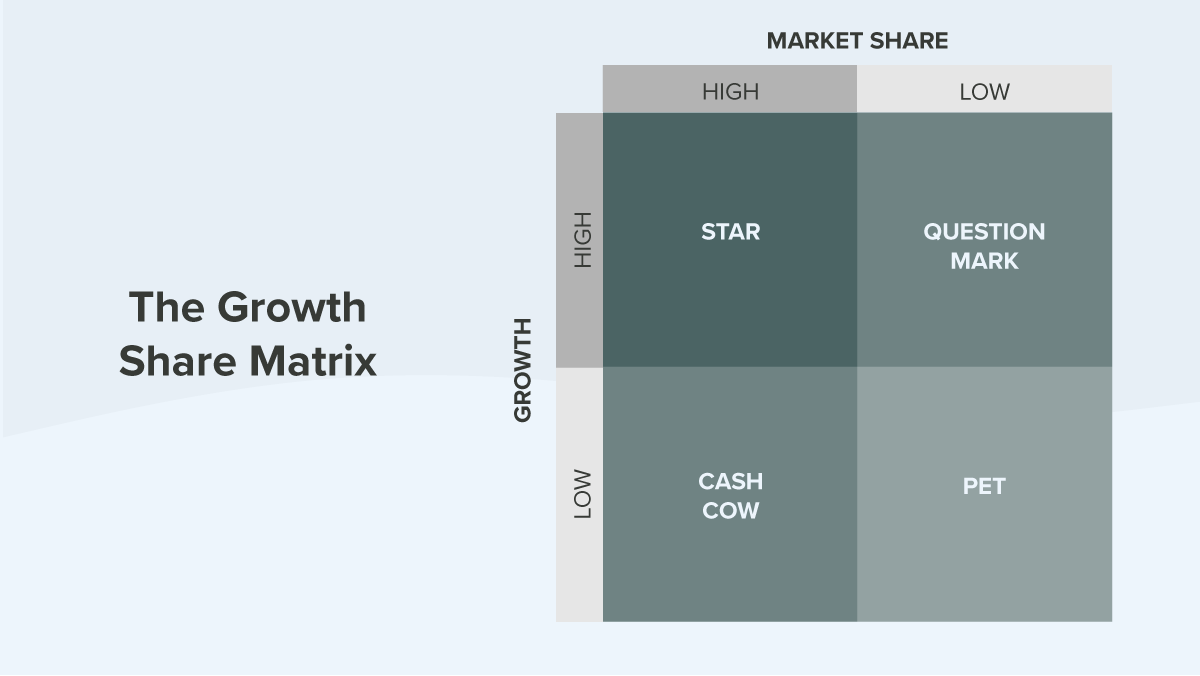As businesses grow, the markets that they operate in will change, the customers they serve will shift and their products will evolve. Market expansion frameworks guide how that change happens.
Market expansion frameworks help businesses strategize company and product development. They guide overall decision-making at a company to help determine the best way to market, sell, develop and service products.
Here are four market expansion frameworks you can use:
1. Ansoff Matrix
The Ansoff Matrix is an expansion framework developed by a mathematician in 1957. It breaks down the relationship between a product and the target market and the riskiness of that combination.

It’s a four-quadrant grid with new and existing products on the x-axis and new and existing markets on the y-axis. The four expansion strategies it contains are:
- Diversification: Introducing a new product to a new market
- Product Development: Introducing a new product into an existing market
- Market Development: Introducing an existing product into a new market
- Market Penetration: Further selling an existing product into an existing market
Each of those strategies has different levels of risk, with diversification being the most chancy and market penetration being the safest option.
Knowing which of those strategies you’ll pursue will inform where you need to invest resources in order to be successful. Do you need to focus on product development and innovation? Do you need to conduct market research? Do you need to do both?
2. BCG Growth Share Matrix
The BCG Growth Share Matrix was created in 1968 by the founder of Boston Consulting Group. Like the Ansoff Matrix, it’s also a four-quadrant grid, but it focuses on the relationship between growth rate and market share to help companies determine the potential profitability of different expansion opportunities.

On the x-axis, there’s high and low market share, and on the y-axis is high and low growth. The four potential market categories are:
- Cash cow: Where you have a low market growth rate and a high market share. This is your bread and butter market segments where you can expect reliable revenue
- Dog: Where you have a low market growth rate and a low market share. These are the types of markets you should avoid because there isn’t much long-term potential and you don’t have previous success
- Question mark: Where you have a high market growth rate but a low market share. You’re not sure if your product or service is viable in these markets, but there is potential so it’s worth further evaluating these markets
- Star: Where you have a high market growth rate and a high market share. These markets have the most potential but are often also the smallest
Using these market categories helps companies determine where they want to invest, maintain and divest their targeting in order to optimize their growth.
3. Porter’s Five Forces
Porter’s Five Forces was published in a book by a Harvard Business School professor in 1980. It focuses on the external factors that are at play in a market and how those impact the potential success of expanding into it.
The five forces are:
- Existing competitors: What is the current competitive landscape? Who are the other players in the market? How does their pricing, target audience, brand and product compare to yours? How easy is it for customers to switch from your competitors’ solution to yours?
- Threat of new entrants: Is this a growing market where new, innovative companies will enter? What is the barrier of entry? Can customers easily switch from your solution to a competitor’s?
- Threat of substitute products: What alternatives exist to your solution that aren’t direct competitors? How does the value provided by substitutes compare with the value provided by your solution? How does the cost of substitutes compare with the cost of your solution? How much affinity do customers have for substitutes? How adverse are they to change?
- Bargaining power of buyers: How many competitors do buyers have to choose from? How much information do they have access to? What’s the level of price disparity among potential solutions? How sensitive are customers to price?
- Bargaining power of suppliers: What suppliers do you rely on in order to produce your solution in terms of both physical goods and employee work? How substitutable are suppliers? How much competition is there amongst potential suppliers?
You use this framework to understand the competitiveness of a market and to decide if it’s worth entering. Generally, you want these forces to be low so that you have a greater chance of establishing a strong presence in the market and obtaining a high market share.
4. MARACA Framework
The MARACA Framework is a model used by HubSpot to evaluate opportunities for expanding into global markets. It focuses on three factors:
- MA (market availability): How big is the market? How saturated is it? How easy is it to enter?
- RA (real-time analytics): What’s your current foothold in this market?
- CA (customer addressability): Is there product-market fit? Does your solution satisfy a need that exists within this market?
The MARACA Framework helps you do a cost-benefit analysis on whether or not it’s worth expanding into a specific new market through the lenses of opportunity, traction and fit.
Potential markets get a score for each of 0–10 for each category, and the higher the overall scores, the better fit a market is.
The Takeaway
These market expansion frameworks can be helpful when reaching growth plateaus as you’re trying to figure out what’s next. Those inflection points where the growth starts to flatten off or tip in the wrong direction are where you’d want to apply these frameworks to strategize how you can best turn your trajectory around.
Additionally, you don’t have to choose between these four frameworks as you’re evaluating expansion opportunities. Each model looks at potential markets from a different angle, so you can use them in conjunction with each other to get a more well-rounded picture.
Guido Bartolacci
Guido is Head of Product and Growth Strategy for New Breed. He specializes in running in-depth demand generation programs internally while assisting account managers in running them for our clients.





